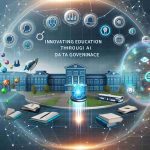Machine learning, a captivating branch of artificial intelligence, has been making headlines and revolutionizing industries. But what exactly is it? In essence, machine learning refers to the development of algorithms and statistical models that enable computers to perform specific tasks without explicit instructions. These models learn patterns from data, improving their performance over time as they are exposed to more information.
At the core of machine learning is the idea of creating systems that can automatically learn and adapt without human intervention. This is achieved using various techniques such as supervised learning, unsupervised learning, and reinforcement learning. Supervised learning involves training a model on a labeled dataset, allowing it to make predictions or decisions based on new data. In contrast, unsupervised learning deals with unlabeled data, seeking to uncover hidden patterns or intrinsic structures within the data. Reinforcement learning is where an agent learns to make decisions by performing certain actions within an environment to maximize cumulative reward.
The impact of machine learning is vast, spanning numerous fields such as healthcare, finance, and entertainment. In healthcare, for instance, machine learning algorithms can predict patient outcomes and assist in diagnosing diseases, potentially saving lives. Similarly, in finance, these algorithms can forecast stock market trends and detect fraudulent activities, providing significant economic benefits.
The ongoing advancements in machine learning are opening up new possibilities and challenges. As researchers continue to push boundaries, the potential for machine learning to fundamentally transform technology and society remains immense and intriguing.
The Unseen Shadows of Machine Learning: How This Silent Revolution Impacts Lives
While machine learning is often hailed for its revolutionary capabilities, less is known about the hidden implications it holds for societies and individuals. One critical area affected by machine learning is privacy. As algorithms require massive datasets for training, there arises a risk of personal data misuse, leading to privacy concerns. How do institutions manage this? Addressing these challenges involves developing robust data protection laws and ethical guidelines.
Moreover, machine learning can unintentionally perpetuate and even amplify biases present in the data. This brings up significant controversies, particularly when these models are applied in sensitive areas like law enforcement or hiring processes. Can these biases be eliminated completely? It requires vigilant oversight and continuous model refinement. Governments and organizations are increasingly working to design algorithms that are transparent and explainable, promoting fairer outcomes.
Another fascinating yet under-discussed aspect is the economic shift machine learning triggers in job markets. While it automates mundane tasks, leading to heightened efficiency, it simultaneously demands new skill sets from the workforce. This transition invites us to ponder: how can we prepare the current and future workforce for a machine learning-driven world? Educational systems are adapting by emphasizing STEM education and digital literacy.
In conclusion, while the promise of machine learning is undeniable, its integration into everyday life warrants careful consideration and action. For those interested in a deeper dive into machine learning and its ethical implications, explore resources from IBM and Microsoft.





















